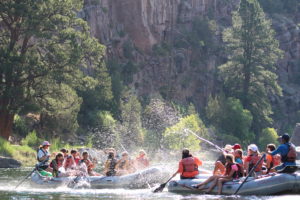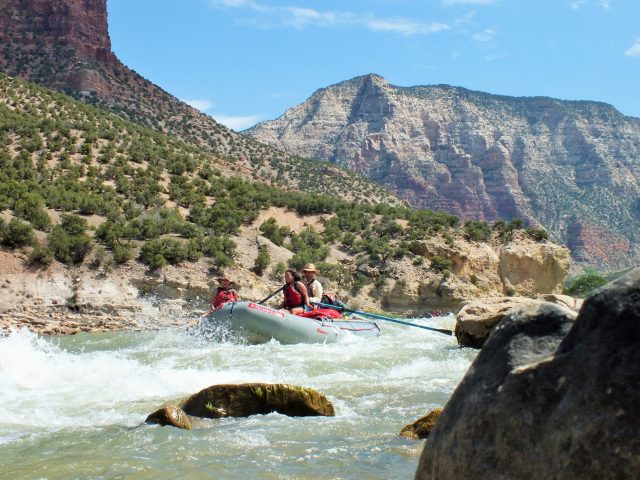Conquering Your White Water Fears
White Water River Rafting
Brush Those Fears Away With a Few Great Tips
Preparing to go down the river for the very first time brings forth a range of emotions. Fear of the rapids, confusion of what to bring or wear, anxiety of a new experience, or just terrifying in general. Almost every person feels this way at the beginning, but their feelings quickly alter after being out on the water for just a day. What once was a fear becomes a craving for more of that thrill and excitement. Don’t let the fears behind white water rafting stop you from an amazing experience. Here are some tips and tricks to help wash those fears away.
- Schedule that river trip!
Taking the chance to go out on that white water river trip is the first step. If you are hesitant about how you are going to go, don’t worry, no extra skills are needed for rafting. All you need to do is enjoy the ride. Day trips are a great start as well to get your feet a little wet. We have a spectacular one day Utah rafting trip on the Green River perfect for a first timer. Not so hesitant, check out our our phenomenal 4 and 5 day trips through Dinosaur National Monument.
- Just Breathe
Seeing a rapid coming your way could be quite the frightening view. Taking deep breaths and going to a “happy place” gets the nerves out quickly. Inhale the calming river vibes and exhaling the anxiety. After that first rapid gets you wet you will be ready and anticipating more.
- Trust your guide.
Your river guide will do their best to navigate the swift river currents as safely as possible. These women and men are trained in both guiding, first aid and different swift water rescue procedures. The river can be unpredictable, your guides are ready for whatever the white water has to throw at them. You are in good hands.
- Have some fun!
Have a water fight, make a joke, or sing a song. Getting into a good mood and having some fun will get your mind off of the negative thoughts. If you are planning on not getting wet, well that is inevitable, so get ready for some waves coming your way. Getting a little splashed only makes for a better ride and a lot more fun!
- Do some research.
The internet is full of great advice on all aspects of white water rafting. There are a lot of great blogs and websites that will help guide you in the right direction. Calling a rafting company and asking questions is also a great way to get good information. Try the locally owned outfitters first for the area you are thinking about trying out a river trip. They will have the best up to date first hand knowledge of the regions river and conditions. Dinosaur River Expeditions is Vernal, Utah’s only locally owned and operated rafting outfitter. Looking for a trip in this region we are the ones to call.
Getting several different perspectives helps ease some of the worries that are brought to new rafters. Feeling more prepared physically and mentally is a great way to make the fears go away. Before each trip a safety talk is also provided for the customers and crew. Listening and paying attention to that talk as well as any other instructions will keep you ready at all times.
Conquer your white water rafting fears and go on that river rafting trip! The experience is beyond words and addicting. Once you get past those fears and negative thoughts, the beautiful canyon and river will become a sanctuary. It provides an outlet from the busy world and daily life stresses. Being disconnected from phones and electronics creates time to self reflect and grow closer to nature. Don’t let fear stop you from the experiences that white water rafting gives. It brings peace and happiness to all that come into contact go rafting and splash those fears away!


